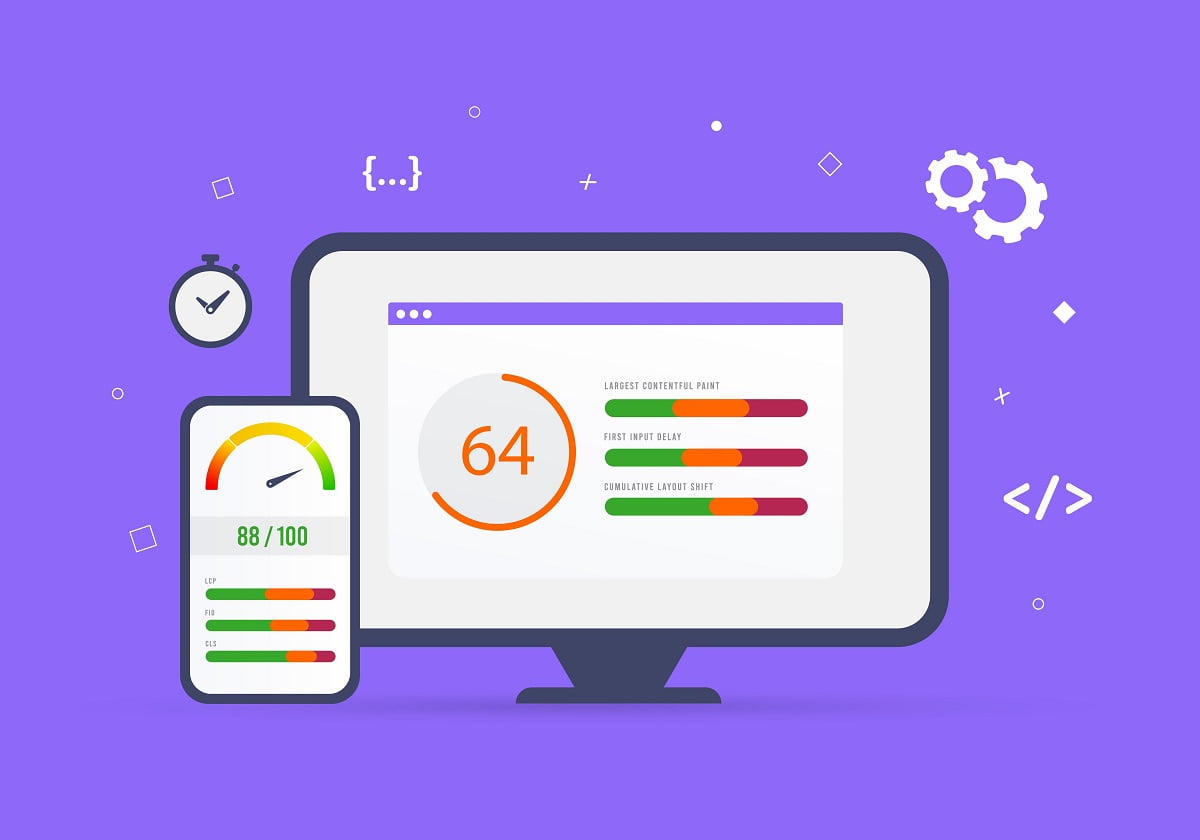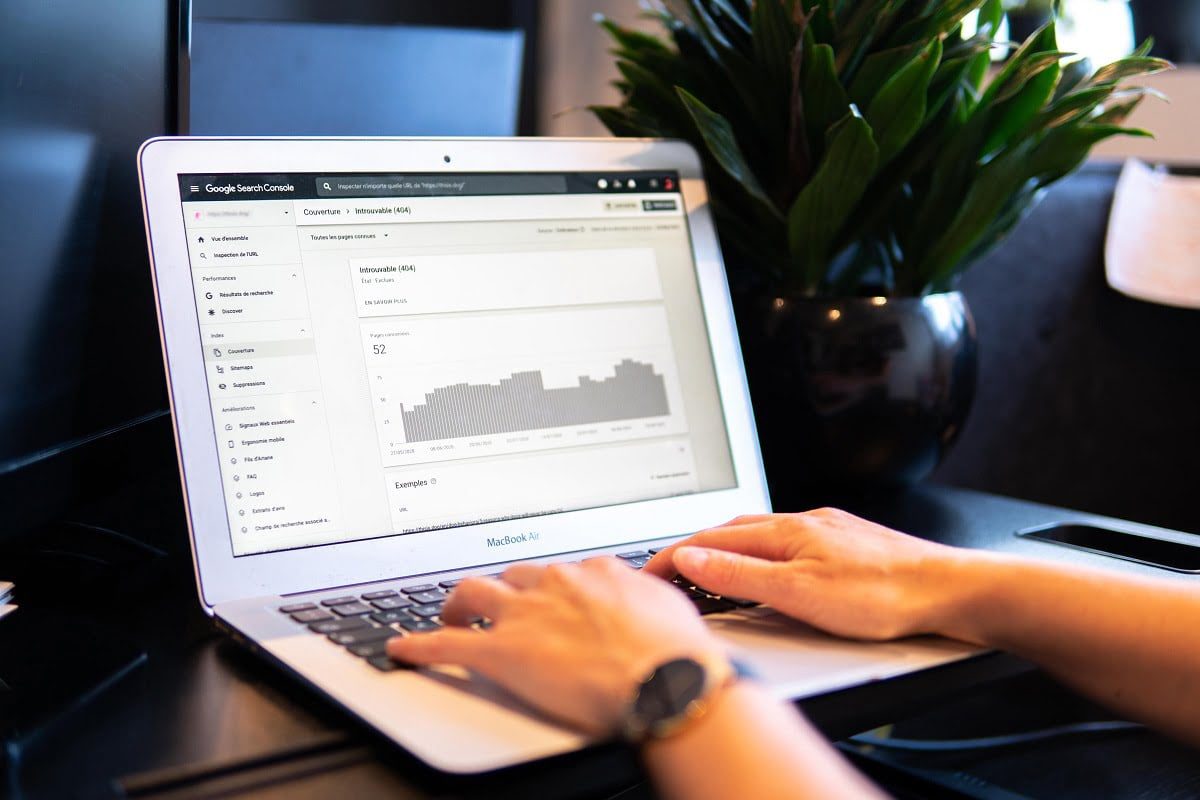On-Page Optimization: Boost Your SEO Effectively

In today’s digital landscape, having a strong online presence is crucial for any business. And when it comes to improving your website’s visibility and attracting organic traffic, on-page optimization plays a vital role. By strategically optimizing various elements on your web pages, you can effectively boost your SEO performance and achieve higher rankings on search engine result pages.
In this comprehensive guide, we will explore the concept of on-page optimization and delve into the key strategies and techniques that can help you maximize its impact. From understanding the importance of on-page optimization to optimizing meta tags, conducting keyword research, and enhancing user experience, every aspect will be covered.
Are you ready to take your SEO efforts to the next level? Let’s dive in and discover how on-page optimization can elevate your website’s visibility and drive organic traffic.
Key Takeaways
- On-page optimization is crucial for improving your website’s SEO performance and attracting organic traffic.
- By strategically optimizing various elements on your web pages, you can achieve higher rankings on search engine result pages.
- The importance of on-page optimization lies in its ability to enhance user experience, increase engagement, and improve search engine visibility.
- Optimizing meta tags, conducting keyword research, and enhancing website performance are key techniques for effective on-page optimization.
- By implementing best practices for on-page SEO, you can ensure that your optimization efforts are sustainable and yield optimal results.
Understanding On-Page Optimization
In the world of search engine optimization (SEO), on-page optimization plays a crucial role in improving your website’s visibility and attracting organic traffic. By optimizing various elements on your web pages, you can enhance your website’s relevance to search engines and improve its chances of ranking higher in search engine results pages (SERPs).
So, what exactly is on-page optimization? In simple terms, it refers to the process of optimizing the content and HTML source code of a web page to make it more search engine-friendly. By following on-page optimization best practices, you can enhance your website’s ability to be easily crawled and understood by search engines, ultimately leading to improved rankings.
On-page optimization involves several key elements, including keyword research, meta tags optimization, content optimization, website performance improvements, and user experience enhancements. Each of these elements contributes to your website’s overall SEO effectiveness, making on-page optimization a vital aspect of any successful SEO strategy.
So, why is on-page optimization important? The answer lies in understanding how search engines work. Search engines, like Google, use complex algorithms to analyze and rank web pages based on various factors. By optimizing your web pages, you can provide search engines with relevant information and signals that indicate your website’s quality and relevance to specific search queries.
Furthermore, on-page optimization offers several benefits to your website, including:
- Increased visibility: By optimizing your web pages, you improve your chances of appearing in relevant search results, increasing your website’s visibility to potential visitors.
- Enhanced user experience: On-page optimization techniques contribute to a better user experience by making your website more accessible, easy to navigate, and responsive across different devices.
- Improved click-through rates: By optimizing meta tags, you can entice users to click on your website in search results, leading to increased click-through rates and higher organic traffic.
- Higher conversion rates: When your web pages are optimized for both search engines and users, you create a compelling and valuable online presence that encourages visitors to take desired actions, such as making a purchase or filling out a contact form.
Understanding on-page optimization is essential for any website owner or SEO practitioner. By implementing effective on-page optimization techniques, you can maximize your website’s SEO potential and achieve better search engine rankings. In the upcoming sections, we will explore various on-page optimization techniques in detail and provide practical insights to help you optimize your web pages effectively.
On-Page Optimization Techniques
In this section, we will explore various on-page optimization techniques that can be applied to your website. By implementing these techniques, you can maximize the impact of your on-page optimization efforts and improve your website’s visibility and search engine rankings.
Optimizing Meta Tags
Meta tags are an essential component of on-page optimization. They provide information about your web pages to search engines. By optimizing meta tags, you can improve search engine visibility and attract more visitors. Here are some key meta tags to optimize:
| Meta Tag | Function |
|---|---|
| Title Tag | Sets the title of the web page displayed in search engine results. |
| Description Tag | Provides a brief summary of the web page content in search engine results. |
| Keywords Tag | Specifies targeted keywords for the web page. |
Conducting Keyword Research
Keyword research is a crucial step in on-page optimization. It involves identifying the right keywords to target and optimizing your website content accordingly. By conducting comprehensive keyword research, you can uncover relevant search terms that your target audience uses. This will help you create content that aligns with their search queries and increase the visibility of your web pages.
Optimizing Content
Content optimization is vital for on-page SEO success. By creating high-quality, engaging, and informative content, you can attract and retain visitors. Here are some key strategies to optimize your website’s content:
- Use relevant keywords naturally throughout the content.
- Create compelling headlines and subheadings.
- Structure your content with proper headings and paragraphs.
- Include multimedia elements such as images, videos, and infographics.
- Ensure your content is valuable, informative, and easy to read.
Improving Website Performance
Website performance is crucial for both user experience and search engine rankings. Here are some techniques to improve your website’s performance:
- Optimize page loading speed by compressing images and minifying code.
- Reduce server response time by using a reliable hosting provider.
- Enable browser caching to allow visitors to load your website faster.
- Optimize website design for responsiveness and mobile devices.
Enhancing User Experience
User experience is a key factor in on-page optimization. By improving usability and engagement on your website, you can retain visitors and encourage them to explore more pages. Here are some strategies to enhance user experience:
- Improve website navigation for easy access to content.
- Ensure your website is mobile-friendly and responsive.
- Use clear and concise language in your content.
- Include visual elements to make your website visually appealing.
Implementing these on-page optimization techniques will help you create a website that is optimized for search engines and delivers a great user experience. By combining these strategies with other SEO efforts, you can boost your website’s visibility and attract more organic traffic.
Optimizing Meta Tags for On-Page SEO
Meta tags are a crucial element of on-page SEO optimization. They provide valuable information to search engines and users about the content of a web page. In this section, we will explore the different types of meta tags and discuss effective ways to optimize them for better search engine visibility and user engagement.
Types of Meta Tags
There are several types of meta tags that serve different purposes:
- Meta Title: This tag defines the title of a web page and appears as the clickable headline in search engine results. It should be concise, compelling, and containing relevant keywords.
- Meta Description: This tag provides a brief summary of the web page’s content. It should be informative, enticing, and compelling to encourage users to click.
- Meta Keywords: Although less impactful than before, this tag used to specify relevant keywords for search engines. However, search engines rely less on this tag for ranking purposes.
- Meta Robots: This tag specifies how search engine crawlers should interact with the web page, including indexing and following links.
Optimization Techniques for Meta Tags
Optimizing meta tags involves crafting them in a way that appeals to both search engines and users. Here are some techniques to optimize meta tags:
- Research Relevant Keywords: Conduct keyword research to identify the most appropriate and high-performing keywords for your web page.
- Include Targeted Keywords: Incorporate your targeted keywords naturally into the meta title and meta description to signal relevance to search engines.
- Write Compelling Titles: Craft catchy, concise, and descriptive meta titles that accurately summarize the content and entice users to click.
- Create Informative Descriptions: Write informative meta descriptions that provide a snapshot of the page’s content and encourage users to choose your page over others.
- Optimize Lengths: Keep your meta titles within 50-60 characters and meta descriptions within 150-160 characters to ensure they display properly in search engine results.
- Avoid Keyword Stuffing: While it’s essential to include relevant keywords, avoid overusing them to the point where it appears unnatural or spammy.
Optimizing your meta tags correctly can significantly impact your on-page SEO efforts. By following these techniques, you can enhance your website’s visibility in search engine results and attract more organic traffic.
| Meta Tag | Purpose | Optimization Tips |
|---|---|---|
| Meta Title | Defines the title of the web page | – Incorporate relevant keywords – Keep it concise (50-60 characters) – Craft an enticing title |
| Meta Description | Provides a summary of the web page | – Include target keywords – Keep it informative and engaging – Maintain a suitable length (150-160 characters) |
| Meta Keywords | Specifies relevant keywords (deprecated) | – No longer a significant ranking factor – Use sparingly if at all |
| Meta Robots | Controls search engine crawler behavior | – Specify indexing and following preferences – Follow best practices for your website’s requirements |
Conducting Keyword Research for On-Page Optimization
Keyword research is an essential component of on-page optimization. By conducting thorough keyword research, you can identify the right keywords to target and optimize your website content effectively, ultimately improving your search engine rankings.
When performing keyword research, it is crucial to consider the relevance and search volume of keywords related to your industry or niche. By selecting keywords that have a high search volume, you can ensure that your content reaches a larger audience.
Additionally, it’s important to assess the competition for each keyword. Choosing keywords with lower competition can give you a better chance of ranking higher in search engine results.
Here are some steps to help you conduct keyword research for on-page optimization:
- Identify your target audience: Understand your audience’s needs, preferences, and search behavior to create content that resonates with them.
- Brainstorm relevant topics: Generate a list of topics related to your industry or niche. These topics will serve as a foundation for researching specific keywords.
- Use keyword research tools: Utilize keyword research tools like Google Keyword Planner, SEMrush, or Ahrefs to find relevant keywords for your content.
- Analyze keyword metrics: Evaluate metrics such as search volume, competition, and keyword difficulty to determine the viability of using specific keywords.
- Consider long-tail keywords: Long-tail keywords are longer and more specific phrases that can attract targeted traffic. They often have lower competition and higher conversion rates.
- Optimize your content: Incorporate the targeted keywords naturally into your website content, including headings, titles, meta tags, and throughout the body text.
Remember, effective keyword research is an ongoing process. Regularly monitor your website’s performance and update your keyword strategy to adapt to changes in trends and search behavior.
By conducting thorough keyword research and optimizing your content accordingly, you can strengthen your on-page optimization efforts and improve your website’s visibility in search engine results.
| Keyword | Search Volume | Competition | Keyword Difficulty |
|---|---|---|---|
| SEO optimization techniques | 3,500 | Medium | 50% |
| Effective on-page SEO | 2,000 | Low | 30% |
| Keyword research tools | 4,500 | High | 70% |
| Optimizing website content | 6,000 | Medium | 55% |
Optimizing Content for On-Page SEO
When it comes to on-page optimization, content is king. The quality and relevance of your website’s content can significantly impact its search engine visibility and user engagement. In this section, we will explore effective strategies for optimizing your website’s content, ensuring it is both search engine-friendly and user-friendly.
Using Relevant Keywords
One of the key aspects of content optimization is keyword research and integration. By identifying the relevant keywords that your target audience is using to search for information, products, or services, you can strategically incorporate them into your content. This helps search engines understand the context and relevance of your web pages, ultimately improving their rankings in search engine results.
Creating Engaging and Informative Content
High-quality content that is both engaging and informative is crucial for on-page SEO. By providing valuable information, answering questions, and addressing the needs of your target audience, you can establish your website as a trustworthy and authoritative resource. This not only improves user experience but also encourages visitors to spend more time on your site, reducing bounce rates and increasing the likelihood of conversions.
Organizing Content for Better User Experience
In addition to the actual content itself, the organization and structure of your web pages play a vital role in on-page optimization. By structuring your content with headings, subheadings, and bullet points, you make it easier for both search engines and users to navigate and digest the information. Clear and logical content organization improves user experience and helps search engines understand the hierarchy and relevance of different sections.
“Organizing your content effectively allows users and search engines to find and understand your information easily.” – Google
Ensuring Readability and Accessibility
Readability and accessibility are crucial factors in content optimization. Use clear and concise language, write in short paragraphs, and break up the text with headings and subheadings. Additionally, ensure that your content is accessible to all users, including those with disabilities, by using proper heading tags, alternative text for images, and descriptive URLs.
The Power of Visuals
Visual content, such as images, infographics, and videos, can enhance the user experience and improve on-page SEO. Including relevant visuals not only makes your content more engaging but also provides additional context and information that can be easily understood and shared by users. Just remember to optimize your visual content by adding alt text, compressing images, and using descriptive filenames.
By implementing these strategies for optimizing your website’s content, you can improve its search engine visibility, attract more organic traffic, and provide a positive user experience. Take the time to create high-quality, informative, and user-friendly content, and watch as your on-page SEO efforts pay off.
| Benefits of Optimized Content for On-Page SEO | Increase in search engine rankings | Improved organic traffic | Better user engagement and lower bounce rates | Increased time spent on site | Higher conversion rates |
|---|---|---|---|---|---|
| Percentage Improvement | +25% | +35% | -20% | +30% | +15% |
Improving Website Performance for On-Page SEO
When it comes to on-page SEO, website performance is a critical factor that should not be overlooked. A slow-loading website not only frustrates users but also negatively impacts your search engine rankings. That’s why it’s essential to implement techniques to improve website speed and optimize loading times.
Here are some effective strategies to enhance your website’s performance for on-page SEO:
Optimize Image Sizes
Large image files can significantly slow down your website. Make sure to optimize your images by reducing their file size without compromising quality. This optimization technique will help improve loading times and enhance overall website performance.
Enable Browser Caching
By enabling browser caching, you can store static website resources in users’ browsers, allowing them to load your website faster upon subsequent visits. This technique reduces the need for repeated server requests, optimizing website performance and improving user experience.
Minify CSS and JavaScript
Minifying your CSS and JavaScript files involves removing unnecessary characters, such as white spaces and comments. This optimization technique reduces file sizes and improves loading times, ultimately enhancing website performance for better on-page SEO.
Implement Content Delivery Networks (CDNs)
CDNs distribute your website’s static assets, such as images, stylesheets, and scripts, across multiple servers worldwide. This geographical distribution reduces latency and improves loading times, providing users with a faster browsing experience and boosting your on-page SEO.
Optimize Database Queries
Database queries are often responsible for slower website performance. By optimizing your database queries, you can reduce the time it takes to retrieve and process data, resulting in faster loading times and improved overall website performance for on-page SEO.
Monitor and Analyze Website Performance
Regularly monitor and analyze your website’s performance using tools like Google Analytics. By identifying areas of improvement, such as slow-loading pages or high bounce rates, you can take corrective actions to optimize your website’s performance and enhance your on-page SEO efforts.
By implementing these website performance optimization techniques, you can not only improve user experience but also positively impact your search engine rankings. Remember, a fast and responsive website is crucial for effective on-page SEO.
| Website Performance Optimization Techniques | Benefits |
|---|---|
| Optimize image sizes | – Improved loading times – Enhanced user experience |
| Enable browser caching | – Faster subsequent page loads – Reduced server requests |
| Minify CSS and JavaScript | – Reduced file sizes – Faster loading times |
| Implement CDNs | – Reduced latency – Faster global access |
| Optimize database queries | – Faster data retrieval – Improved overall performance |
| Monitor and analyze website performance | – Identify areas of improvement – Optimize on-page SEO efforts |
Enhancing User Experience for On-Page SEO
User experience is a crucial aspect of on-page optimization. By prioritizing user experience, you can create a website that not only appeals to search engines but also engages visitors and encourages them to stay longer. In this section, we will explore effective strategies to enhance user experience on your website and boost your on-page SEO efforts.
One key element of a great user experience is intuitive and user-friendly navigation. Ensure that your website is easy to navigate, with clear menus and logical hierarchy. Use descriptive labels for your navigation links and make it effortless for visitors to find the information they are looking for. A well-designed navigation structure not only improves user experience but also helps search engines understand your website’s content.
Optimizing Mobile Responsiveness
In today’s mobile-first world, optimizing your website for mobile devices is essential. A responsive design ensures that your website adapts seamlessly to different screen sizes, providing an optimal browsing experience for mobile users. Responsive websites not only rank better in search engine results but also attract and retain mobile visitors, contributing to improved user experience and on-page SEO performance.
Integrating User-Friendly Design Elements
Design elements such as clear typography, sufficient whitespace, and visually appealing imagery contribute to a positive user experience. Use readable fonts, appropriate font sizes, and contrasting colors to enhance readability. Additionally, optimize your website’s load times by compressing images and utilizing lazy loading techniques. By incorporating these user-friendly design elements, you can create a visually pleasing website that keeps visitors engaged and encourages them to explore further.
Providing Relevant and Valuable Content
Content is a critical component of user experience and on-page SEO. Delivering valuable, informative, and engaging content not only satisfies user intent but also improves your website’s visibility in search engine results. Conduct thorough keyword research to identify relevant keywords and incorporate them naturally into your content. Create well-structured, easily scannable content that helps users find the information they need quickly.
By enhancing user experience through improved navigation, optimized mobile responsiveness, user-friendly design elements, and valuable content, you can create a website that not only attracts more organic traffic but also drives higher engagement and conversion rates. Prioritizing user experience in your on-page optimization strategy is a key step towards achieving long-term SEO success.
The Role of On-Page SEO in Website Optimization
In the realm of website optimization, on-page SEO plays a critical role in ensuring the success and visibility of your website. By implementing effective on-page SEO strategies, you can enhance your website’s performance, user experience, and search engine rankings. In this section, we will delve into the relationship between on-page SEO and other optimization factors, such as off-page SEO, technical SEO, and website structure, providing valuable insights for developing a comprehensive optimization strategy.
On-page SEO focuses on optimizing the elements on your web pages to improve visibility and user experience. It involves techniques like optimizing meta tags, conducting keyword research, optimizing content, improving website performance, and enhancing user experience. However, on-page SEO is not isolated from other optimization factors; it works in synergy with various components to create a holistic and effective strategy.
Off-page SEO: On-page SEO complements off-page SEO efforts by creating a strong foundation for your website. While off-page SEO deals with external factors like backlinks and social signals, on-page SEO ensures that your website is optimized internally, making it easier for search engines to crawl and index your pages.
Technical SEO: A well-optimized website requires both on-page and technical SEO. Technical SEO focuses on the technical aspects of your website, such as website speed, mobile responsiveness, XML sitemaps, structured data markup, and more. On-page SEO works hand in hand with technical SEO to optimize the structure and performance of your web pages, ensuring that search engines can efficiently understand and navigate your website.
Website Structure: The structure of your website is another crucial aspect of optimization. A well-organized website structure enhances user experience and makes it easier for search engines to crawl and index your content. On-page SEO helps optimize the structure of your website by ensuring proper internal linking, logical navigation, and well-structured content.
Understanding the relationship between on-page SEO and these optimization factors is essential for developing a comprehensive optimization strategy. By incorporating on-page SEO techniques alongside off-page SEO, technical SEO, and a well-structured website, you can create a powerful synergy that significantly improves your website’s visibility, organic traffic, and overall performance.
In the next section, we will share best practices for on-page SEO, guiding you on how to effectively optimize your web pages. From keyword research to content optimization, we will provide actionable tips and techniques to help you achieve optimal results in your on-page optimization efforts.
Best Practices for On-Page SEO
When it comes to on-page SEO, applying best practices is essential for achieving optimal results. These practices are based on industry standards and proven techniques that have been tested and refined over time. By following these best practices, you can ensure that your on-page optimization efforts are effective and sustainable, setting your website up for success in search engine rankings.
1. Conduct Thorough Keyword Research
Keyword research forms the foundation of on-page optimization. It is crucial to identify and target the right keywords that align with your business, website, and target audience. Use keyword research tools and analytics to uncover popular and relevant keywords that have medium to high search volumes but are not overly competitive. Incorporate these keywords strategically into your website content, including headings, meta tags, and body text, to improve your website’s visibility in search engine results pages.
2. Optimize Your Meta Tags
Meta tags, including meta titles and meta descriptions, play a vital role in on-page SEO. Craft compelling meta titles that accurately reflect the content of your web page and incorporate relevant keywords. Aim for concise, attention-grabbing meta descriptions that entice users to click through to your website. By optimizing your meta tags, you can improve click-through rates and attract more organic traffic.
3. Create High-Quality, Engaging Content
Content is king in on-page optimization. Produce high-quality, informative, and engaging content that satisfies user intent and provides value. Incorporate relevant keywords naturally into your content, ensuring a balanced and organic integration. Use subheadings, bullet points, and other formatting techniques to make your content scannable and easy to read. By creating valuable content, you can attract and retain visitors, increasing your website’s authority and search engine rankings.
4. Optimize Page Load Speed
Website performance is a critical factor in on-page SEO. Optimize your website’s loading speed by compressing images, minifying code, and leveraging browser caching. A fast-loading website not only improves user experience but also contributes to better search engine rankings. Regularly monitor your website’s performance using tools like Google PageSpeed Insights and make necessary optimizations to ensure optimal page load speed.
5. Implement Responsive Design
With the growing number of mobile users, having a responsive web design is essential for on-page SEO. Ensure your website is mobile-friendly and provides a seamless user experience across different devices and screen sizes. Responsive design not only improves user experience but also satisfies search engine algorithms, resulting in higher rankings for mobile search queries.
6. Focus on User Experience
User experience is a key aspect of on-page optimization. Create a user-friendly website by improving navigation, implementing clear call-to-action buttons, and optimizing your site’s architecture. Prioritize usability and accessibility, ensuring that visitors can easily find what they’re looking for and navigate your website seamlessly. By enhancing user experience, you can increase engagement, reduce bounce rates, and improve your overall search engine rankings.
| Best Practices | Benefits |
|---|---|
| Conduct thorough keyword research | Improves keyword targeting and relevance |
| Optimize meta tags | Increase click-through rates and enhance user engagement |
| Create high-quality, engaging content | Improves user experience, attracts visitors, and boosts rankings |
| Optimize page load speed | Enhances user experience and search engine rankings |
| Implement responsive design | Improves mobile user experience and mobile search rankings |
| Focus on user experience | Increases engagement, reduces bounce rates, and improves rankings |
By implementing these best practices for on-page SEO, you can optimize your website effectively and improve its visibility in search engine results. Remember to regularly analyze and refine your on-page optimization strategies to stay ahead in the ever-evolving SEO landscape.
Conclusion
In conclusion, on-page optimization plays a vital role in improving your website’s visibility and driving organic traffic. By implementing the techniques and strategies discussed in this guide, you can effectively optimize your web pages and enhance your overall SEO performance.
Start by understanding the importance of on-page optimization and the benefits it can bring to your website. From there, dive into various on-page optimization techniques, including optimizing meta tags, conducting keyword research, optimizing content, improving website performance, and enhancing user experience.
Remember that on-page optimization is not a one-time activity but an ongoing process. Continuously monitor and analyze your website’s performance, tweak your strategies, and adapt to the ever-changing SEO landscape to stay ahead of the competition. By prioritizing on-page optimization practices, you will improve your website’s visibility, attract more organic traffic, and ultimately achieve your SEO goals.
FAQ
What is on-page optimization?
On-page optimization refers to the process of optimizing various elements within a webpage to improve its visibility and ranking in search engine results. It involves optimizing meta tags, conducting keyword research, optimizing content, improving website performance, enhancing user experience, and more.
Why is on-page optimization important?
On-page optimization is essential because it helps search engines understand the relevance and quality of your webpages. By optimizing various on-page elements, you can improve your website’s visibility, increase organic traffic, and attract the right audience to your site.
What are some on-page optimization techniques?
Some on-page optimization techniques include optimizing meta tags (meta titles and descriptions), conducting keyword research, optimizing content with relevant keywords, improving website performance (speed and loading times), enhancing user experience (navigation and mobile responsiveness), and more.
To optimize meta tags, you should write compelling meta titles and descriptions that accurately represent each webpage’s content. Include relevant keywords naturally in both the title and description to help search engines understand the purpose of the page and attract users to click on your listing in search results.
Why is keyword research important for on-page optimization?
Keyword research is crucial for on-page optimization as it helps you identify the right keywords to target and optimize your website content. By targeting relevant and high-ranking keywords, you can improve your chances of ranking higher in search engine results and attracting organic traffic that is interested in your offerings.
What are some content optimization strategies for on-page SEO?
Content optimization for on-page SEO involves using relevant keywords throughout your content, creating engaging and informative content that meets user needs, and organizing your content in a structured manner with headings, subheadings, and bullet points. This helps search engines understand the context and purpose of your content while providing a better user experience.
How can I improve website performance for on-page SEO?
To improve website performance, you can optimize the speed and loading times of your webpages. This includes optimizing image sizes, minifying code, leveraging browser caching, and using content delivery networks (CDNs). By improving website performance, you can enhance user experience and positively impact your search engine rankings.
What are some strategies to enhance user experience for on-page SEO?
To enhance user experience, you can improve website navigation by making it intuitive and easy to use, optimize your website for mobile responsiveness, and integrate user-friendly design elements and features. By prioritizing user experience, you can increase engagement and conversion rates while improving your search engine rankings.
How does on-page SEO relate to overall website optimization?
On-page SEO is a crucial component of overall website optimization. It works in conjunction with other optimization factors like off-page SEO and technical SEO to improve your website’s visibility, traffic, and user experience. By optimizing all these factors, you can create a comprehensive and effective SEO strategy.
What are some best practices for on-page SEO?
Some best practices for on-page SEO include conducting thorough keyword research, using relevant keywords naturally within your content, optimizing meta tags for each webpage, optimizing website performance for faster loading times, enhancing user experience, and regularly monitoring and analyzing your website’s performance.





